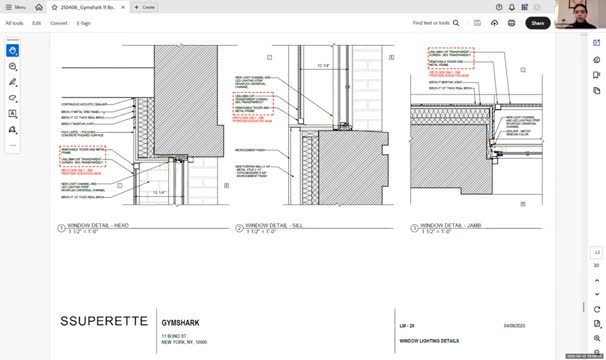Gymshark plans innovative flagship store design on Lafayette Street
April 11, 2025 | Manhattan City, New York County, New York
Thanks to Scribe from Workplace AI , all articles about New York are free for you to enjoy throughout 2025!

This article was created by AI using a video recording of the meeting. It summarizes the key points discussed, but for full details and context, please refer to the video of the full meeting. Link to Full Meeting
One of the key features discussed was the installation of a linear surround light designed to create a subtle halo effect around the windows. This lighting, proposed for the third floor, aims to enhance the visual appeal of the storefront while maintaining the integrity of the existing facade. The design includes a transparent sticker with an 80% degree of transparency, which will cover the entire window surface without obstructing the view of the window mullions.
However, the proposal raised questions among committee members regarding the effectiveness and necessity of the halo lights, especially given that the interior of the store will already be well-lit. Some members expressed concerns that the renderings provided did not clearly convey the intended effect of the halo lights, leading to uncertainty about their overall impact on the building's appearance.
Additionally, the committee examined the prominent Gymshark branding projected on a transparent screen at the top of the building. This feature is designed to display the brand's logo from evening until midnight, using a light fixture that outlines the letters rather than a traditional screen. The use of such technology in a historic district prompted inquiries about its appropriateness, as members struggled to identify similar examples within the area.
As the meeting concluded, the committee acknowledged the innovative aspects of the design while emphasizing the need for clarity and consideration of the historic context. The discussions reflect a broader dialogue about balancing modern retail needs with the preservation of Manhattan's architectural heritage, leaving attendees pondering the future of urban design in historic neighborhoods.
Converted from Manhattan CB2 April 10, 2025 - Landmarks Committee Meeting meeting on April 11, 2025
Link to Full Meeting
Comments
View full meeting
This article is based on a recent meeting—watch the full video and explore the complete transcript for deeper insights into the discussion.
View full meeting